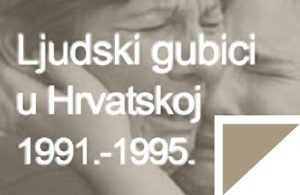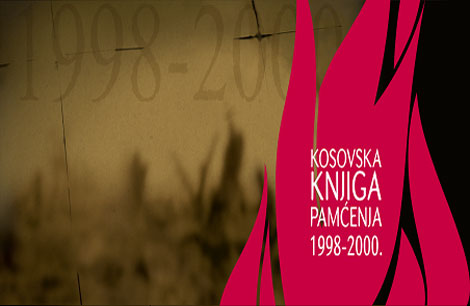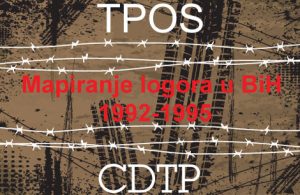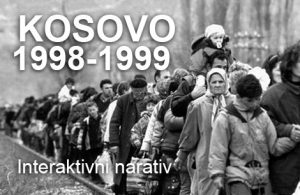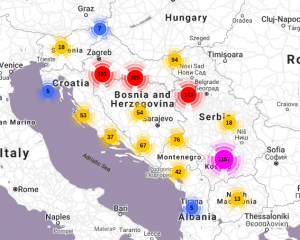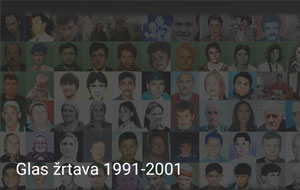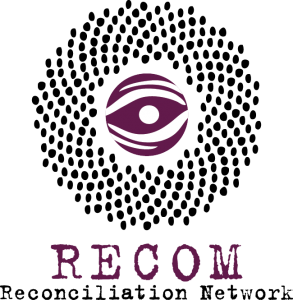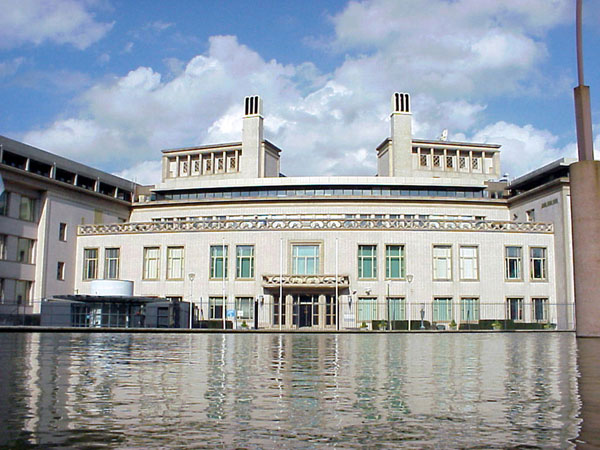
25.05.2021.
The Role of the International Tribunal for the Former Yugoslavia (ICTY) in the Reconciliation Process
Danijela Vojinović, ICTY, reconciliationAuthor: Danijela Vojinović
Even though the reconciliation process requires respecting the values of both justice and truth, there is frequently a doubt as to whether primacy should be given to mechanisms of retributive justice (through trials) or to restorative justice (through truth commissions that focus on healing and forgiveness). What they have in common is the recognition that a crime has occurred; and additional forms of recognition include lustration, naming and shaming, criminalising denial of the past, commemoration and monuments, atonement, apology, purgation, and renewal.
Reconciliation is a set of difficult, lengthy and unpredictable processes that include (re)building relations and transforming them into constructive ones—most often following numerous and systemic violations of human rights—at the individual, interpersonal, socio-political, and institutional levels. Simply put, it signifies finding ways of living alongside recent enemies. One need not be essential to them or forgive them the past in any way, but it is necessary to coexist and develop cooperation to the extent required in order for us to be part of the same society, so that we may live better together than we would live if we were separated.
According to Kriesberg,[ii] the elements of reconciliation and the activities that contribute to it are truth (truth commissions, school and educational programmes, media activities, recognition and trials), justice (trials, compensation, reparation, restitution, and the creation of fair procedures, mechanisms and institutions for the future), regard (group dialogue, demonstrations of regard, recognition, apologies, forgiveness), and security (development of trust through laws, protection of rights, autonomy, control of the security sector).
Reconciliation must encompass the following values: truth, forgiveness, justice and peace. This is the ideal paradigm against which we must compare every individual case in order to assess its performance, bearing in mind the time that has passed since the conflict; and certainly, in every concrete case at least one of these four components will be missing, to a greater or lesser extent.[iii]
Unlike with peace, justice and forgiveness—which are mostly indisputable factors in the reconciliation process—there are diametrically opposite views with regard to truth. While on the one hand an insistence on confrontation with the past is considered necessary, and to be achieved by establishing the facts and recognition, on the other hand we have silence, denial and forgetting, i.e., “turning to the future”.
Even though the reconciliation process requires respecting the values of both justice and truth, there is frequently a doubt as to whether primacy should be given to mechanisms of retributive justice (through trials) or to restorative justice (through truth commissions that focus on healing and forgiveness). What they have in common is the recognition that a crime has occurred; and additional forms of recognition include lustration, naming and shaming, criminalising denial of the past, commemoration and monuments, atonement, apology, purgation, and renewal. The main and virtually only mechanisms in the territory of the former Yugoslavia are the ICTY and criminal trials, i.e., retributive justice. The aim of retributive justice is discouragement of revenge, individualisation of guilt, prevention of impunity for the most serious crimes, prevention of perpetrators again assuming positions of power, fulfilment of obligations to the victims, and the strengthening of legitimacy and the democratisation process.[iv]
The case of the former Yugoslavia is highly illustrative, both in that the existence of an international criminal tribunal is necessary and indispensable, and that without other additional mechanisms and genuine political will this process cannot succeed in making its potential contribution to reconciliation.
The ICTY’s relation toward the countries of the former Yugoslavia
Most assessments that rate the Tribunal’s performance as excellent, would agree with the following statement: “I consider the greatest heritage of the Hague Tribunal to be the established and adjudicated facts, as well as the thousands and thousands of established and adjudicated facts on what happened, on such and such a day, at such and such a place, across BH, in Croatia, or in Kosovo and Metohija. And which will, if nothing else, prevent anyone from manipulating them in the distant future. Because in the near future everything is possible, since almost no one even knows about those facts adjudicated by the Tribunal.”[v]
Since its founding, the ICTY has continuously been exposed to distrust, and its activity has been susceptible to manipulation and malicious interpretation. The reasons for the absence of greater success should be sought both in the activities of the Tribunal itself, as well as in the hostility and resistance of the former Yugoslav states—the different sides in the reconciliation process.
It is a fact that such a form of justice was new at the time when it was established, i.e., that the ICTY was a sort of experiment. It was imposed from outside, by members of the international community—which created a certain suspicion; it was removed from the territory where the conflict occurred; and from a legal standpoint, it was a combination of the Anglo-Saxon and European continental legal systems—which in certain places created the impression of inconsistency, and left many complexities. These are all objective and unchangeable circumstances. The Tribunal, however, could have done more to become acquainted with the local particularities and to better predict the reaction that its actions would have. The outreach programme that addressed these issues was launched too late, when the prejudices had already taken root. It was only in 1999 that the court became “fully aware that its work would reverberate much further than the judicial mandate of determining the guilt or innocence of indicted individuals […] and recognised that it plays a role in the process of confronting the past in the former Yugoslavia”[vi]— and that was six years after it was founded.
Long after the government had changed in the states created in the territory of the former Yugoslavia, the forces of the old regimes continued to be active, indulging the initial unpopularity that the Tribunal suffered from among the citizens, which was used for scoring political points; for example, the Milošević trial was broadcast live and was left to be interpreted by the unprofessional and unfriendly public; everyone who respected and supported the work of the Tribunal was discredited as a traitor, which was in part made possible thanks to fact that the Tribunal did not address the effects of its activity.
The aspiration of the states towards membership in the European Union was used as an “aid” in applying pressure on them to cooperate with the Tribunal, but this pressure was often too mechanical, which obscured the deeper message and purpose of the process. Such a position on the part of the Tribunal left great maneuvering space for the interpretation and (ab)use of the facts, its rulings and each of its individual activities by all relevant actors in the three states. At the same time, “many were not interested in the court process itself and the complex legal theories—such as the theory of the joint criminal enterprise and co-perpetration—as much as they were in the final outcome of the trial. Such an outcome would then be interpreted in line with the national narrative, which was specific for each of the countries, ethnic groups and peoples. Furthermore, international justice in this respect was confronted with a very difficult opponent, bestowed upon us by nature itself—cognitive dissonance, the psychological process by which the individual tends to avoid all situations or information that create a sense of discomfort within them.”[vii]
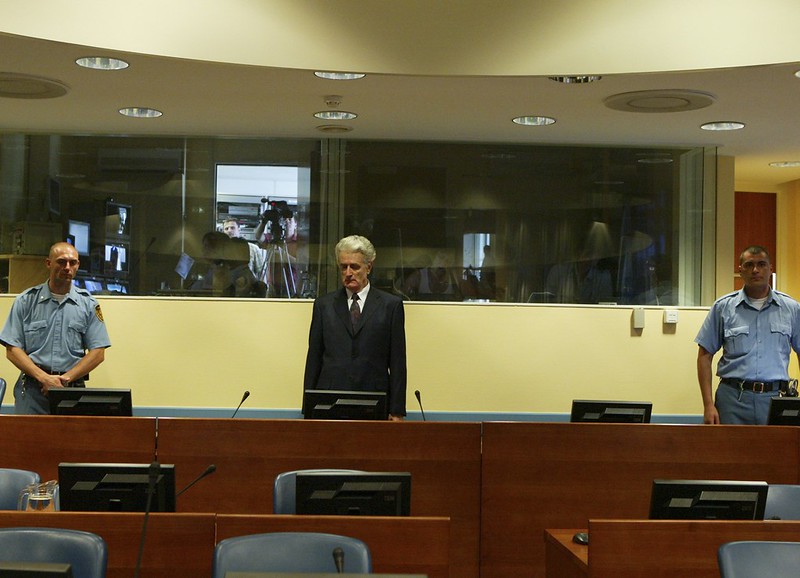
Serbia’s relationship with the ICTY
If we were to draw deductions about the relationship between Serbia and the ICTY only on the basis of the media picture and statements by certain officials, it would difficult to say whether “The Hague hates the Serbs” more than “the Serbs hate The Hague”, but fulfillment of the cooperation—as Serbia’s international obligation—has proceeded slowly and with great difficulty, and following the exercise of much pressure—both on the part of the Tribunal and of the European Union. Why is this so, if we are committed to confronting the past, if we have expressed readiness to cooperate with the Hague Tribunal, and if we regret all the victims and want those responsible for their suffering to be punished?
There are several reasons for the deeply-rooted resistance towards cooperation with the ICTY and towards transitional justice in general in Serbia. Milošević and his policies were not imposed, but actually enjoyed huge voter support; nearly everyone was involved in some manner—as inspirers, executors, or supporters of the national policy in general terms; the story of the enemy, with the ethnicisation of Serbian policy in the 1990s—whereby all others are the aggressors, and the Serbs are the victims— has served as the justification, devised beforehand, for everything that the Serbian side did in its struggle for justice; the victims and their families are foreigners, i.e., they live within the borders of other states, so there has been no main incentive, like the necessity of cohabitation; and the power of disruptors from the old regime has been very considerable, as has been the reluctance of the elite to confront the past—including even Zoran Djindjić, who did not want to damage Serbia’s reputation and presented the cooperation with the ICTY very pragmatically, i.e., as a necessary sacrifice for the sake of a European prospect.[viii] The accused have also enjoyed substantial popularity, including that demonstrated by the organisation of support rallies; the participation of a large number of “ordinary people” has contributed to the existence of a sense of solidarity with them, and also to the democratisation of the sense of responsibility and relativisation of guilt.[ix] Finally, there was a fear that convictions or establishing certain facts before the ICTY could influence the rulings in the genocide cases brought by Bosnia and Herzegovina and Croatia against Serbia before the International Court of Justice. The tendency to coordinate defenders through the Law on the Rights of the Accused—in order to prevent confessions by indicted citizens of Serbia, which could threaten state interests—speaks to the caution exercised to prevent Serbia as a state being tied to crimes in any way.[x]
Since Serbia—contrary to all expectations—did not distance itself from the previous regime and did not demonstrate genuine readiness to cooperate, the international community was forced to implement a strategy of coercion. An overly mechanical approach in this respect by the international community, and a local environment resistant to transitional justice, resulted in the exploitation of this topic for domestic policy purposes in the struggle for power, with the discrediting of opponents and restoration of national historical myths, and, on the international scene, for obtaining rewards, which could again be used for additional political points at home. In the meanwhile, the crimes—in the absence of any reflection about them—were forgotten, and the notions of Serbia’s innocence and of general anti-Serbian prejudice —including at the ICTY, whose work was judged to be highly biased—were reinforced.
Relationship of the state institutions of the Republic of Serbia with the ICTY
The wave of “voluntary surrenders”, during the period of cohabitation of President Tadić and Prime Minister Koštunica, reinforced the public perception of the unjust court, and turned the accused into heroes who were sacrificing themselves (for a second time) for the sake of their people’s fate. General Pavković’s idea to call a referendum on his surrender to the Tribunal was unprecedented in its populism and manipulation. The public calls by the Government for the accused to exercise responsibility and turn themselves in, that they must demonstrate an ethical awareness of the needs of the people and the state, is an example of how the cult of the victim is created out of those who are responsible for some of the most serious crimes committed since the Second World War. “[The Serbian people] were not ever informed about the substance of the indictments—the crimes for which these individuals had been indicted, how they came about, who the victims were, the scope of the abuse, or any other details. Instead, masked in the guise of voluntary surrenders, dealing with the past was repackaged as acts of patriotism for which the state was grateful. Thus the stepped-up pressure from the ICTY and other international actors did not translate into any substantial changes in Serbia’s understanding of its own past or in any attempt to address past abuses in a systemic way.”[xi]
ICTY in the Media
There is noticeable ethnically tainted media reporting, which entails the division into “ours” and “theirs”; hence, when the accused are members of other nations, the trials are taken to be justice for the victims and the crimes seen as uncivilized monstrous atrocities perpetrated with the involvement of the highest political structures of that group. These trials, together with statements by victims and politicians, easily make their way onto the front pages, and are used for the confirmation of the official narrative about the war, the restoration of nationalism and the narrative about Serb victimisation.[xii] On the other hand, reports on trials where the accused are Serbs are mostly from the perspective of the accused, with doubt concerning the evidence, relativisation of testimonies, culpability and responsibility, with the victims presented statistically and without empathy, while the relatives and friends of the accused are portrayed as bereft. Most problematic is the absence of any contextualisation that would indicate the responsibility of the Serbian authorities and institutions. Instead, the crimes committed by the Serbian side are portrayed as isolated incidents.
The public promotion and rehabilitation of persons convicted of war crimes peaked in a television programme where the guest, Vojislav Šešelj—a convicted war criminal and member of the National Assembly—in violation of Article 88 of the Law on Elections of National MPs, had former Republika Srpska Army General Ratko Mladić—who was convicted in the first instance of genocide in Srebrenica and crimes against humanity—call into the programme. Mladić was depicted in a very affirmative light through his casual conversation with and heart-felt address to his son Darko and Šešelj, so that most viewers could easily identify with this almost familial atmosphere, completely unencumbered by his conviction for the most heinous crimes. None of the authorities reacted, and a member of the Regulatory Authority for Electronic Media explained the acceptability of such content by using market logic, i.e., the struggle for ratings.
Journalists from the very few media that advocate an uncompromising confrontation with the past, as well as representatives of nongovernmental human rights organisations, are subjected to demonisation, hate speech, and often physical violence, allegedly because of their insufficient concern for the Serbian victims, even though analysis of their articles does not show a lower representation of articles about Serbian victims. In such a position, they are insufficiently influential to significantly change the dominant nationalist discourse.[xiii] However, by creating an alternative discourse, they provide an opportunity to learn, face the facts and take account—at least for those who are interested.
The Citizens and the ICTY
The citizens of Serbia have a predominantly negative attitude towards the Hague Tribunal, which is reflected in claims of bias and partiality, numerous criticisms of the Tribunal’s work, and the opinion as to the paucity of the Tribunal’s contribution to learning about the wars in the former Yugoslavia in the 1990s.[xiv] Only 5 percent considered the ICTY to be objective; 45 percent of the respondents had objections to its work (because of the anti-Serb nature of the court, its bias or politicisation, etc.); and its contribution to learning the truth was recognised by not more than 36 percent of the respondents (with merely 11% considering this contribution to be significant, and 25% saying it was only partial), as opposed to nearly half the citizens who considered its contribution small or non-existent. Some of the respondents showed evidence of positively biased remembrance, according to which, for nearly half the citizens, the Serbs were the people with the largest number of victims, while only 5% believed that Serbs had committed the most crimes. Attitudes regarding the victims could be labelled as positively biased also because the citizens who supported erecting monuments to Serb victims were three times as numerous as those who supported creating monuments for civilians who were slain by the Serbian military and police.
More than two thirds of the respondents did not have an answer to the question regarding what happened in Vukovar (Ovčara), a city which was under siege for four years, nor about the case of the Bitiqi brothers, nor about the special court for Kosovo, the number of missing persons, mass graves and detention centres in Serbia (94%). This, taken together with the incorrect answers of other respondents, leads to the conclusion the level of information is low.
The lack of interest in issues related to transitional justice, the negative perception of both the ICTY and the other peoples involved in the conflicts of the 1990s, numerous prejudices and suspicions, the rehabilitation of convicted persons, absence of respect and compassion for the victims, and—no less important—preoccupation with current existential issues, present a very disappointing picture of the failure of the ICTY to make a positive contribution to the reconciliation process. Relations with Bosnia and Herzegovina (with the exception of the Republika Srpska), and especially with Croatia, continue to be a critical topic, especially during election campaigns in any of the three states.
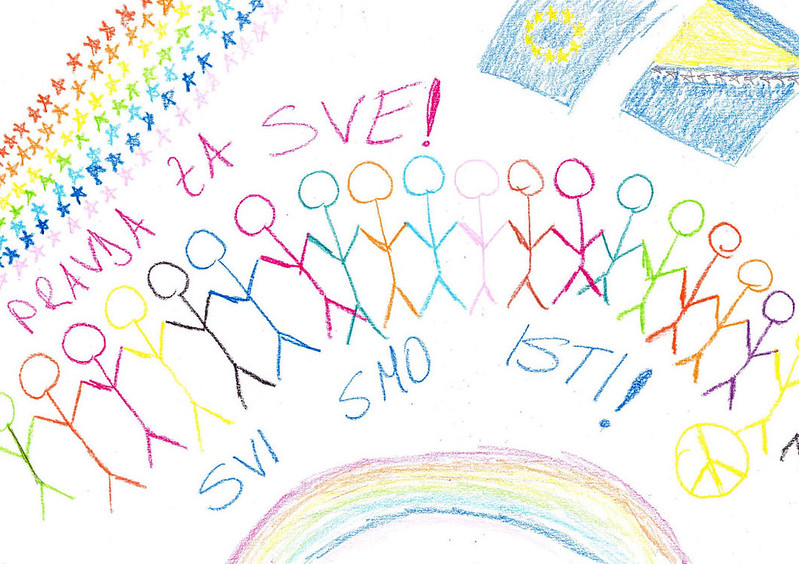
Hague Tribunal legacy
Despite the quality of the trials and their resonance, which was significantly smaller than expected, the heritage of the Tribunal is not negligible and is composed of several prime elements. Firstly, the convictions of the perpetrators of the gravest crimes marked the end of the policy of impunity. The demand that the Prosecution prove the perpetration of a crime beyond a reasonable doubt reduced the space for the possibility of any of the convicted persons being innocent. The opposite, however, was possible, but a large number of perpetrators were in fact convicted, which would not have been the case without the existence of the Tribunal. Secondly, justice was achieved for the victims. Not always and not for all, but certainly for many. The public testimony of more than 3,500 victims provided a unique experience of public recognition of their suffering.[xv] The judicial truth was established and a large number of cases were documented, and remain in an archive for present and future generations, as a starting point in the process of confronting the past and the process of reconciliation. Even though a large number of perpetrators are still integrated into society and may even be living next-door to their victims, many of them have been removed from the region—at least the most influential ones. Finally, by moving the local judiciary into action, the ICTY has contributed to the strengthening of the rule of law.
Considering the fact that distrust of others decreases with an increase in the level of education, while willingness to cooperate with other ethnic groups, willingness to forgive, and the tendency to rehumanise yesterday’s enemies increases, it is clear that far greater attention in all three societies should be given to education—certainly to general education, but primarily to that related to the wars of the 1990s and international criminal and transitional justice. The existence of common history textbooks, based on the court-determined facts which are the Tribunal’s heritage, accompanied by a comprehensive support campaign by all three states—even though this might seem like a utopia from the current standpoint—would be the Tribunal’s most valuable contribution to the process of reconciliation in the region.
David Bloomfield, Teresa Barnes and Luc Huyse (eds.), Reconciliation After Violent Conflict: A Handbook, International Institute for Democracy and Electoral Assistance, Stockholm, 2003, p. 12.
[ii] For a brief overview of the differences between the reconciliation processes following internal and international conflicts, see: Dejan Bursać, Pojam pomirenja: definicija, elementi i problem (The concept of reconciliation: definition, elements and problem), Srpska politička misao No. 2/2014, Yr. XXI, Vol. 44, p. 307.
[iii] Andrew Rigby, Justice and Reconciliation: After the Violence, Lynne Rienner Publishers, Colorado, 2001, p.13.
[iv] David Bloomfield, Teresa Barnes and Luc Huyse (eds), Reconciliation after violent conflict: a handbook, op.cit, p. 98.
[v] Mirko Klarin (SENSE news agency) in: Svetlana Slapšak and Nataša Kandić (eds.), Tranziciona pravda i pomirenje u postjugoslovenskim zemljama: Glasovi institucija, verskih zajednica, aktivista, akademije, kulture i žrtava (Transitional justice and reconciliation in the post-Yugoslav countries: The voices of institutions, religious communities, activists, academia, culture and victims), Coalition for RECOM, Belgrade, 2015, p.27
[vi] United Nations, International Criminal Tribunal for the former Yugoslavia, Outreach Program, available at: http://www.icty.org/bcs/outreach/home-bcs
[vii] Gentian Zyberi, Norwegian Center for Human Rights, in Svetlana Slapšak and Nataša Kandić (eds.), Tranziciona pravda i pomirenje u postjugoslovenskim zemljama: Glasovi institucija, verskih zajednica, aktivista, akademije, kulture i žrtava (Transitional justice and reconciliation in the post-Yugoslav countries: The voices of institutions, religious communities, activists, academia, culture and victims), Coalition for RECOM, Belgrade, 2015, p. 30
[viii] Jelena Subotić, Otimanje pravde: Suočavanje s prošlošću na Balkanu (Hijacked Justice: Dealing With The Past in the Balkans), op.cit., Belgrade Center for Human Rights, Belgrade, 2010, pp. 86–88.
[ix] Aleksandar Bošković, “Događaji neprijatni po našu stvar” (Events unpleasant for our cause), in: Slobodan Kostić (ed), Hag među nama (The Hague Among Us), op.cit., Humanitarian Law Center, Belgrade, 2005, pp. 131–132.
[x] Nataša Kandić, “Pismo Advokatskoj komori Srbije” (Letter to the Serbian Bar Association), in: Slobodan Kostić (ur), Hag među nama (The Hague Among Us), Humanitarian Law Center, Belgrade, 2005, p. 66.
[xi] Jelena Subotić, Hijacked Justice: Dealing with the Past in the Balkans, op.cit., Cornell University Press, Ithaca and London, 2009, p. 51.
[xii] Katarina Ristić (ed.), “Medijski diskursi o suđenjima za ratne zločine u Srbiji” (Media discourses on war crimes trials in Serbia), 2003–2013, Humanitarian Law Center, available at: http://www.hlc-rdc.org/wp-content/uploads/2014/11/medijski-diskursi_SR.pdf (last visited 20 September 2019).
[xiii] ibid.
[xiv] Public opinion poll report “Obaveštenost građana Srbije o ratovima `90-ih godina, ratnim zločinima i suđenjima optuženim za ratne zločine” (Awareness of the citizens of Serbia about the wars of the 1990s, war crimes and trials of war crimes defendants), Demostat, Belgrade, August 2017, pp. 14–17, available at: http://www.hlc-rdc.org/wp-content/uploads/2018/01/Istrazivanje_javnog_mnjenja_Sudjenja_za_ratne_zlocine_Demostat.pdf
[xv] Diane f. Orentlicher, Sužavanje prostora za poricanje: Uticaj Međunarodnog krivičnog tribunala za bivšu Jugoslaviju na Srbiju (Reducing the space for denial: Impact of the International Criminal Tribunal for the former Yugoslavia on Serbia), Centar za tranzicione procese, Belgrade, 2008.
